Learning From the Integration of Soil Health, Water Quality and Climate-Smart Agriculture
A multi-year Illinois Soybean Association project led by Dr. Andrew Margenot is benchmarking tillage and cover crops effects for soil health and water quality. Results will inform farmers of tradeoffs among soil health, carbon credits, and water quality.
Researchers Continue to Strengthen and Refine Soybean SCN Resistance
A team of researchers has been collaborating on a complex project to enhance Soybean Cyst Nematode resistance with long-term, strategic SCN management. The project, supported by the North Central Soybean Research Program, holds great potential for soybean farmers.
Rotate SCN-Resistant Seed Varieties for Optimal Protection
Understanding the difference between soybean cyst nematode-resistant varieties may help soybean growers understand the importance of rotating sources of resistance, which is one of the “active SCN management” strategies advised by The SCN Coalition.
Science for Success
The Science for Success partnership brings together soybean Extension personnel from diverse U.S. regions who collaboratively conduct research and leverage historical knowledge to deliver soybean best management practices to US farmers.
Conservation of Natural Enemies of Insect Pests
This article was originally published on the Soybean Research & Information Network, a checkoff funded website. Conservation biological control is protecting the natural enemies that are already present. Provide food, water and shelter Providing food, water, and shelter for natural enemies will encourage them to stay in the crop area to feed and reproduce. Many beneficial insects need a source of pollen or nectar Beneficial insects often need an alternate food supply in addition to the pest prey. Many natural enemies, including the adult lacewing and minute pirate bug must have a source of nectar, pollen or honeydew to [...]
Stink Bugs
This article was originally published on the Soybean Research & Information Network, a checkoff funded website. In southern states, stink bugs collectively are the costliest insect pest followed by corn earworm. While traditionally considered a southern pest, the range of stink bugs is moving north, and westward as average yearly temperatures continue to increase. Stink bugs get their name from the foul odor they produce as part of their defense mechanism. Stink bugs are attracted to soybean plants in the bloom to early pod-fill stages. They primarily attack soybean pods and seeds, using their piercing-sucking mouthparts that act like [...]
Bean Leaf Beetle – Scouting and Management
This article was originally published on the Soybean Research & Information Network, a checkoff funded website. The bean leaf beetle (BLB) (Cerotoma trifurcata) is a common soybean pest that feeds on cotyledons, leaves, and pods. The trend to milder winters in the past decade is favoring the greater survival of overwintering adults. Growers are also planting soybeans earlier than ever and the combination of the two is increasing the potential for early season damage. Early planted soybeans and especially the first fields to emerge in an area is where seedling feeding injury by overwintering beetles is most likely to [...]
Stem Canker Management
This article was originally published on the Soybean Research & Information Network, a checkoff funded website. Stem Canker is a disease of soybean in the United States and Canada where infections occur primarily on the lower portion of the stem. Multiple fungi in the genus Diaporthe cause the disease. However, identifying and managing stem canker is similar regardless of which fungus is involved. There are similarities between symptoms of stem canker and other late season diseases, including White mold, Phytophthora stem and root rot, Sudden death syndrome and Brown stem rot. Field symptoms of stem canker can also look [...]
Phytophthora Root and Stem Rot
This article was originally published on the Soybean Research & Information Network, a checkoff funded website. Phytophthora sojae is one of the most destructive soybean pathogens in the northern growing regions and a major cause of stand establishment problems. Seeds and seedlings can be infected and killed at any time after the seed has absorbed moisture. The fungus also infects plants later in the season following periods of heavy rain, causing stem rots or chronic root rot. Phytophthora root & stem rot develops quickly in warm, saturated soil. Phytophthora sojae belongs to a group of organisms called Oomycetes, also [...]
Frogeye Leaf Spot Management
This article was originally published on the Soybean Research & Information Network, a checkoff funded website. Frogeye Leaf Spot (FLS) is the most important foliar disease of soybean, especially in the southern U.S. The disease has been occurring more frequently in northern soybean-growing areas and has increasingly suppressed soybean yields in the northern U.S. in recent years. FLS is caused by the fungus Cercospora sojina. Young soybean leaves are most susceptible, while older leaves tend to be more resistant. Leaf symptoms are first noticeable after plants begin to bloom. Infection occurs during warm, humid weather with cloudy days and [...]

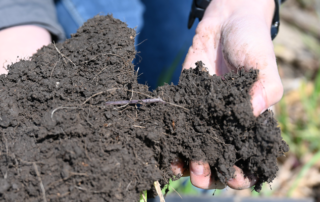
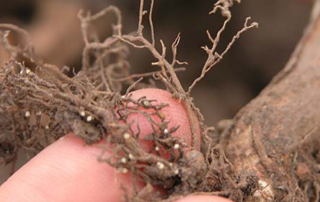
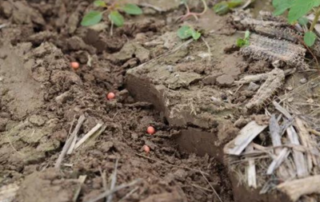
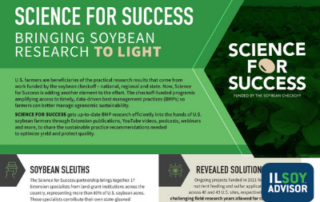
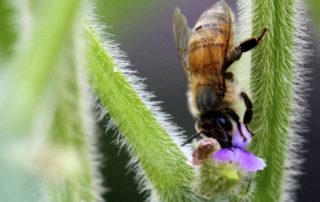
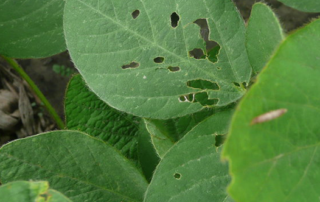
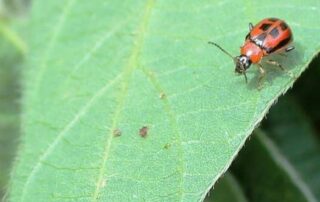
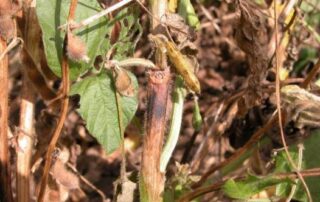
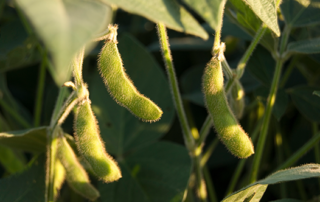
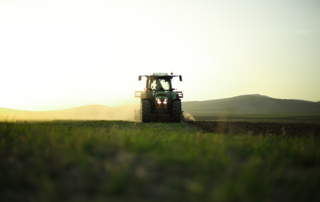

 and then
and then